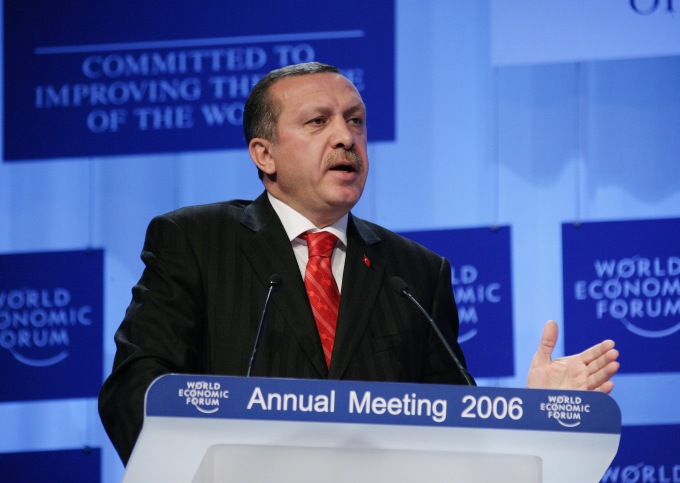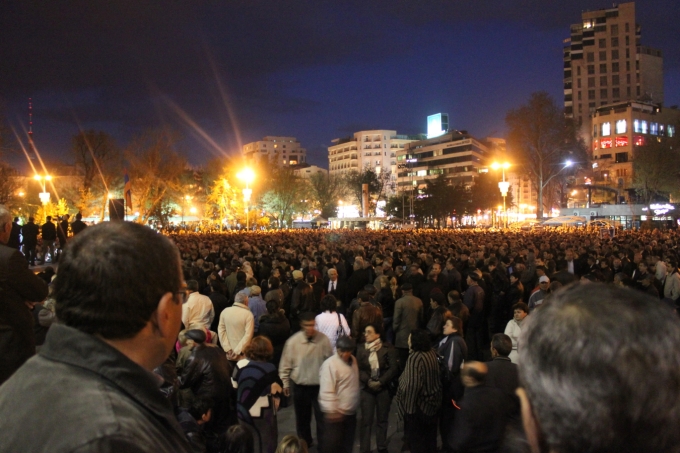
After nearly two years of relative calm on the eastern front, renewed clashes have broken out in the Donbass region of Ukraine. Centered around the government-held city of Avdiivka, violence surged this week as government soldiers and Russian-backed rebels went head-to-head, leading to 33 dead and dozens wounded. According to international monitors, multiple civilians are included as among those dead and wounded. Although there has never truly been peace in the region since the war began, this has been the worst violence that Ukraine has seen since 2015. The violence comes during an uncertain time for Ukraine and the international community, as a new and unpredictable presidential administration in the United States is taking a warmer stance towards Russia. Now, the Ukrainians are wondering just how warm the relationship will become.
While the two sides of the conflict have regularly traded fire for a while, mass casualties on this scale, in such a short period of time as well, have been uncommon since the Minsk II protocol was implemented in February of 2015, almost two years ago. The ceasefire, while not stopping all violence, removed heavy weapons from the front lines and led to a major deescalation of the conflict, at least in comparison to the dire straights Ukraine was in beforehand. Now, however, heavy weaponry from both government forces and the separatists have reentered the front line, in a blatant violation of the Minsk II agreement. Organization for Security and Cooperation in Europe monitors claim that not only have heavy weapons ranging from smaller caliber mortars to launch rocket systems appeared in Avdiivka, the focal point of the new wave of fighting, but also in other key cities such as Yasynuvata and Donetsk.
The recent clashes have left the industrial city of Avdiivka, the government-held city just north of Donetsk, devastated. Although most of the fighting has been on the outskirts during the day, rebels have relentlessly begun shelling the city at night, bombs dropping indiscriminately on civilians. Even during the dead of the Ukrainian winter, many people are without power and heat due to these attacks. And now OSCE monitors worry that the city could be without water as well, as a water filtration plant on the front line is in danger of being severely damaged. But Avdiivka is only one city. If both sides continue along this violent, dangerous trajectory, then it could potentially lead to a major humanitarian catastrophe.
At this time, it is unclear which side started the escalation of fighting, as the government blames the Russian-backed rebels and vice versa. Regardless, it comes at an interesting time: just two weeks since the inauguration of US President Donald Trump, a new leader promising radical change in American policy both at home and abroad. Internationally, he has caused quite a stir by questioning the importance of major American allies, including NATO, Mexico, Australia, among others, and talking about warming relations with an old adversary: Russia.
In response to the unexpected rise of Donald Trump, Ukraine has acted cautiously, particularly in regards to his comments regarding Russia. Under the former Obama administration, President Petro Poroshenko’s government could always count on the United States for support. Since the Russian annexation of the Crimea and the outbreak of violence in Eastern Ukraine in early 2014, the US has been steadfast in their aid for Ukraine in the face of Russian aggression. But with a new president that has openly questioned US sanctions against Russia in the past, the issue of Ukraine is very much up in the air. Poroshenko may have felt the need to remind President Trump that his country still needs American support, and so Russia’s and the separatists’ claims that it could have been Kyiv who renewed the recent fighting are not entirely implausible.
At the same time, it is important to look at an alternative scenario. Buoyed by the prospects of a softer American stance on Ukraine, the separatists may have felt that the time to gain ground against the government is now. Without Western support, even if it is largely diplomatic, Ukraine is left in a much weaker position, leaving it more vulnerable to attack. So Kyiv’s claims may also be accurate. Ultimately, it is very difficult to say one way or the other, as propaganda (largely from Russia, but also some from the Ukrainian government) has played a particularly significant role in this conflict. The War in Donbass has always been notorious for the high levels of misinformation and the distortion of what is true from the beginning. Although, to be fair, this is true of many recent conflicts: the Syrian Civil War, the 2016 US Presidential Election, and so on and so forth.
Since the escalation of violence in Ukraine, all eyes have turned to how the new administration has handled it. And so far, to the relief of some, the Trump administration’s policy has not been markedly different from Obama; but there are some notable differences. American Ambassador to the UN Nikki Haley has already been quick to condemn Russia’s “aggressive actions” in Ukraine, and that sanctions against Russia would remain in place as long as the Crimean peninsula is still in Russian hands. However, Haley also mentioned that America did want better relations with Russia, and that it was a shame that her first appearance at the UN Security Council was a condemnation of the country. Even Russia’s UN Ambassador, Vitaly Churkin, noted calmly that there was a much different tone in comparison to just a couple weeks ago, calling her statement “friendly enough, given the circumstances.”
Notably, Haley’s condemnation of Russia was reportedly repeated in private by President Trump himself. On the sidelines of a National Prayer Breakfast this past Thursday, former Ukrainian Prime Minister Yulia Tymoshenko said that she met privately with the President and Vice President Mike Pence, and that he promised that sanctions against Russia would remain in place until they pulled out of Ukraine. However, some foreign policy analysts have pointed out that Trump was much less specific in Tymoshenko’s characterization of the meeting over whether that included Crimea, which Russia considers part of the Federation and Trump has, in the past, questioned the importance of. However, Trump is certainly known to change his mind quite frequently, and Tymoshenko reportedly came out of the meeting feeling much calmer about the situation, despite ruffling some feathers in Kyiv over the leader of an opposition party meeting with the president instead of someone from Poroshenko’s party, or even Poroshenko himself. President Trump was also scheduled to talk with Poroshenko today to discuss the ongoing situation in Ukraine.
Donald Trump is certainly a very unpredictable player on the global stage. There are certainly very few guarantees as to what he is going to do during his term in office. However, from all early indicators, it looks as if President Trump will not deviate too sharply from the Obama administration’s policy in regards to Ukraine. Perhaps some administration officials will take a mildly softer tone towards Russia, as Haley did, but it is important to remember that James “Mad Dog” Mattis, a staunch opponent of Russia, is now the Secretary of Defense, and Vladimir Putin, despite his election interference, does not have many friends in a Republican-controlled Congress. If Trump were to withdraw sanctions against Russia without them backing out of Ukraine or were to suspend aid to Ukraine, then there would be an uproar across the entire American political establishment.
If I were Poroshenko, I would be much more worried about Europe’s support of Ukraine. Despite the European Union remaining firmly on Ukraine’s side in the face of Russian aggression, there has been a growing sense of frustration in capitals across Europe. Some of this frustration is quite understandable: the Poroshenko government is spectacularly corrupt and ineffective, and the Europeans are much more attune to this fact than the Americans due to being close neighbors. Last year, the Dutch overwhelmingly voted “no” on a referendum to approve the Ukraine-EU Association Agreement, which has still not been ratified as a result. Other EU countries, such as Hungary, have been openly warmer to Russia, and if the French vote in far-right presidential candidate Marine Le Pen in a couple of months, who is openly pro-Russia and has called on France to recognize Crimea as a part of Russia, then they may follow suit. Ukraine certainly has a lot to worry about; but unless something very unexpected happens, then Trump should be near the bottom of the list.








